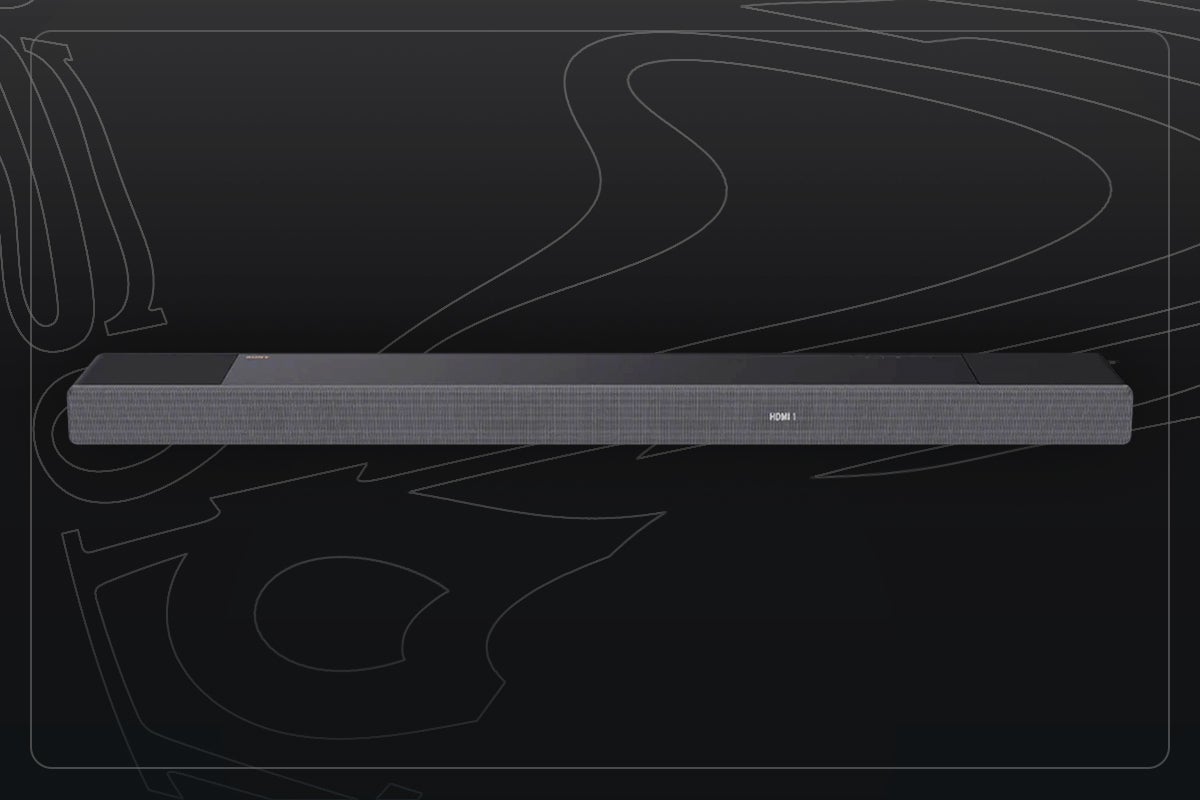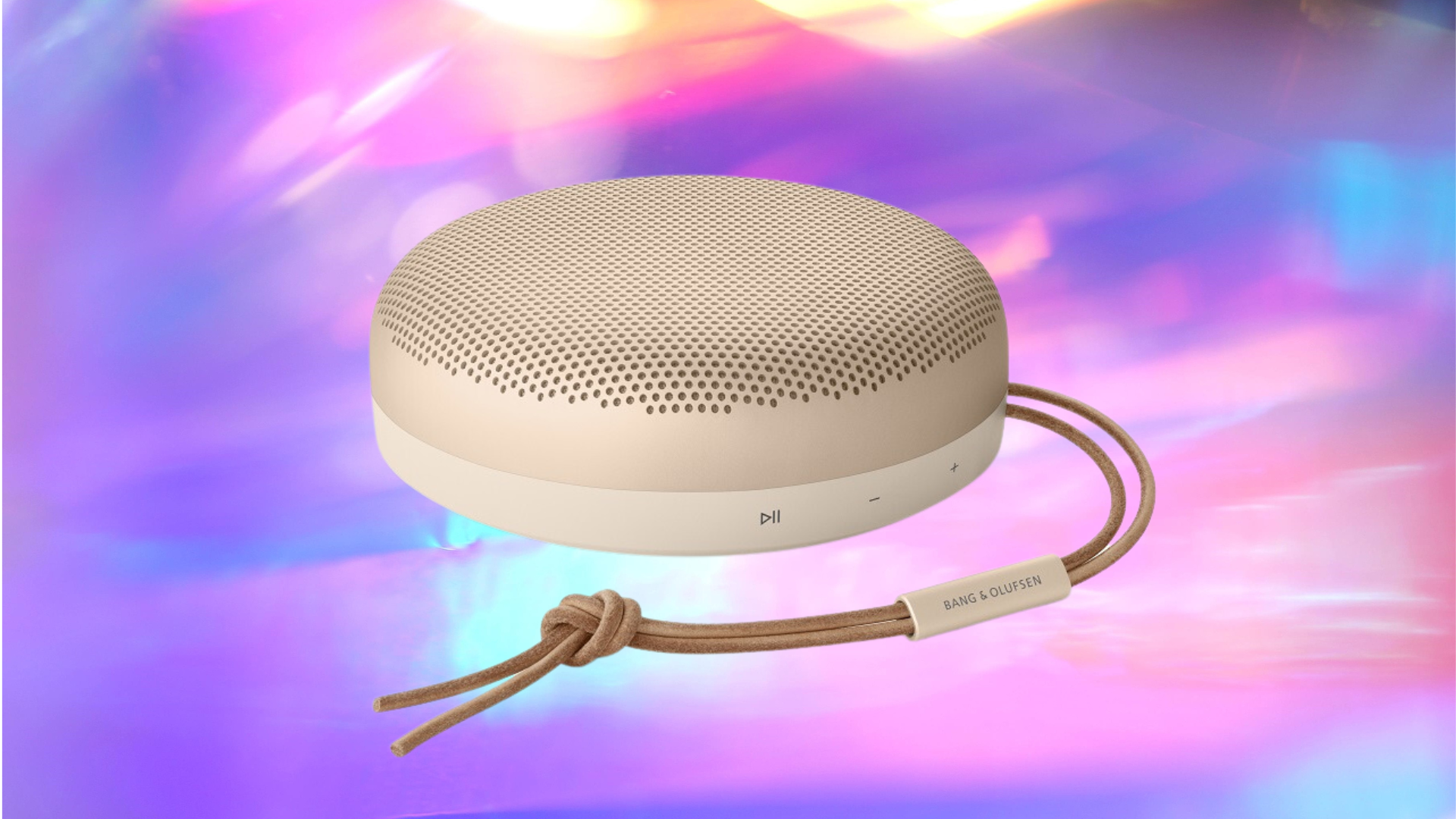Sonos One vs Sonos One SL: What’s the difference?
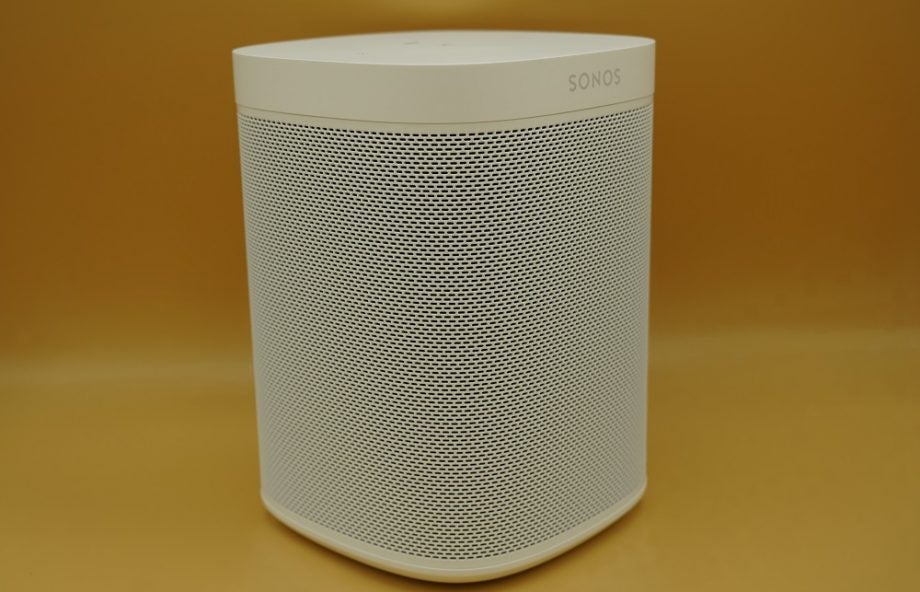
The Sonos One and the Sonos One SL are two of the best speakers we’ve reviewed in recent years with the latter receiving a glowing 5 stars. But, what’s the difference?
You’d be forgiven for questioning why you need to pay £20 extra to get the Sonos One over the newer One SL. After all, the two speakers are strikingly similar from their visual design right down to their audio performance.
However, there is one spec that differs between the two – and how you feel about it could dictate which speaker you go for.
Read on to discover all the similarities and differences between the Sonos One and the Sonos One SL…
Pricing and availability
The first generation Sonos One launched in October 2017 at $199/£199. The speaker was followed by an incremental update in the Sonos One (Gen 2) in 2019. The second-gen speaker featured a new processor and Bluetooth LE support and increased memory for the same price as its predecessor.
The One SL, meanwhile, arrived in September 2019 and cost $179/£179, making it £20 cheaper than the standard Sonos One.
Design
The Sonos One and the Sonos One SL are almost identical in their physical design.
The two speakers have a smooth, cylindrical shape and a compact design that measures 162 x 120 x 120mm and weighs 1.85kg. Both come in black and white colourways.
Both models are wrapped in a modern mesh material around the sides, along with a flat top and bottom with a matching black or white matte finish. The result is a minimalist design that we found blended in well in most settings without drawing attention to itself, letting the audio performance do the talking.
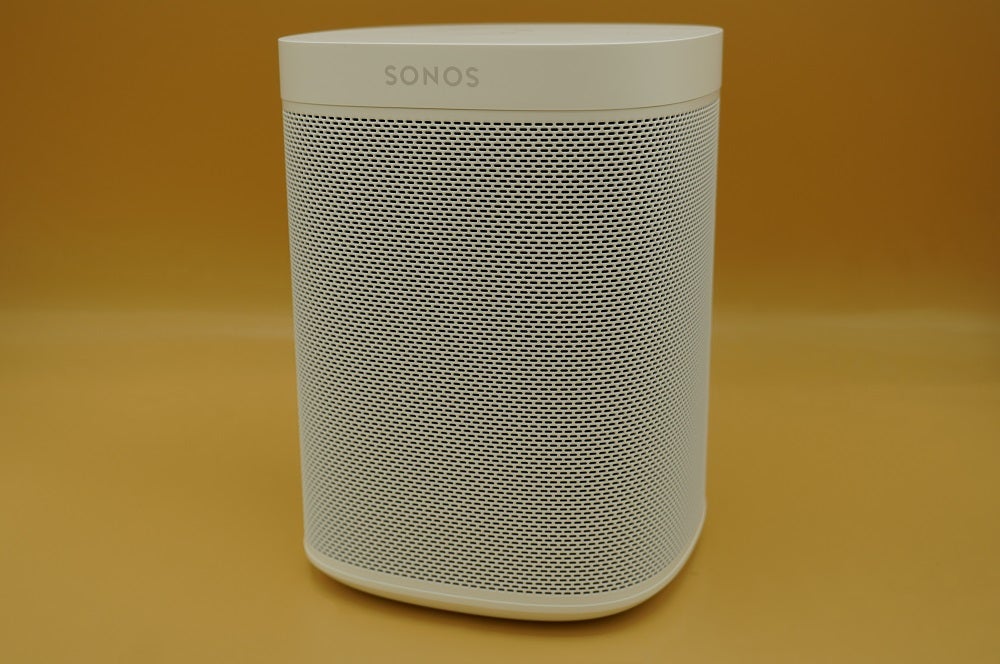
Both Sonos One speakers are also resistant to humidity, though they’re designed for indoor use over portable, on-the-go use.
Inside, both the Sonos One and the One SL take advantage of two Class-D digital amplifiers, one tweeter and one mid-woofer.
There’s a simple array of touch controls on the top of the device which you can tap and swipe to control playback. You can use the buttons to play, pause, skip, replay, adjust the volume and more.
The only difference in design is the addition of the microphone to the pricier speaker. The Sonos One comes with a built-in far-field mic array that uses advanced beamforming and multi-channel echo cancellation for accurate voice commands.
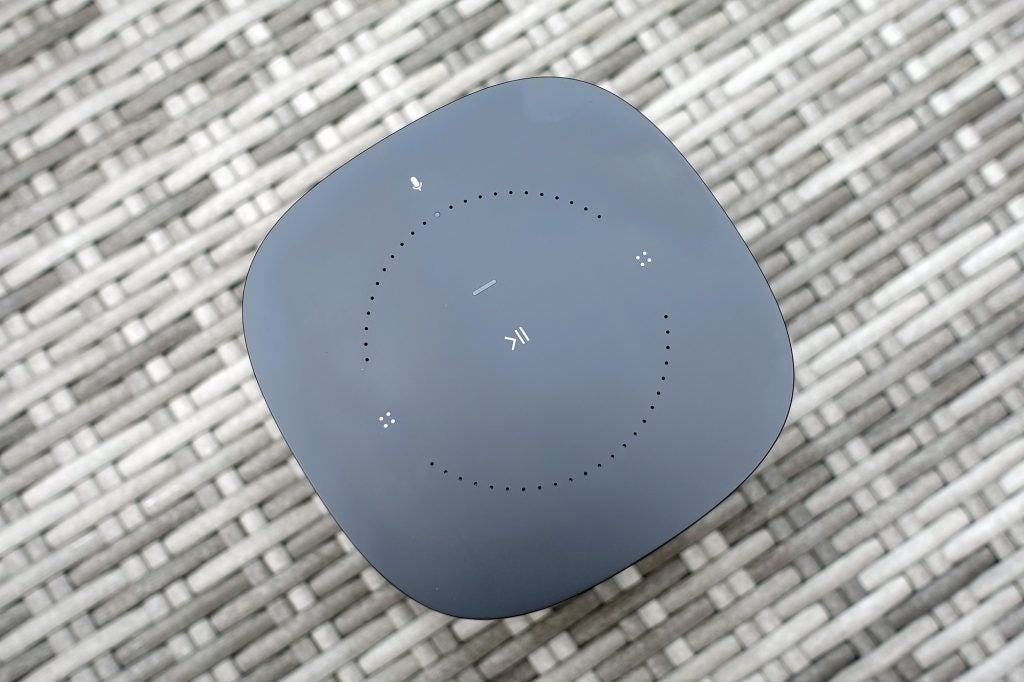
This extra feature is reflected physically in the microphone activation button and the array of LED lights circling the top of the device. You won’t see these design details on the Sonos One SL as the speaker doesn’t include a microphone.
Both speakers include an Ethernet port for hardwiring them to your router, along with a port for the 2m angled power cable on the base of the device.
Features
The absence of the mic on the Sonos One SL naturally has a couple of knock-on effects when it comes to the feature set on the cheaper speaker.
For one, there’s no support for Alexa or Google Assistant on the SL. With the regular Sonos One, you can ask your favourite voice assistant to set timers, check the news, play music and control compatible smart home devices. However, this option is absent on the SL.
We found the Alexa implementation to be excellent, with the Sonos One capable of doing everything the Amazon Echo can and offering better audio than Amazon’s own speaker. Alexa is also better at picking up voices over music on the Sonos One.
You might think the Sonos One would be a better choice of the One and the One SL in this age of remote working and Zoom and Microsoft Teams calls. However, neither the One nor the One SL can be used to chat on these video calling services, which feels like a missed opportunity.
For that reason, the only real reason to choose the Sonos One over the One SL is if you want a smarter, voice-controlled experience from your speaker. Likewise, if you prioritise privacy, you might find the One SL’s complete omission of a mic provides better peace of mind.
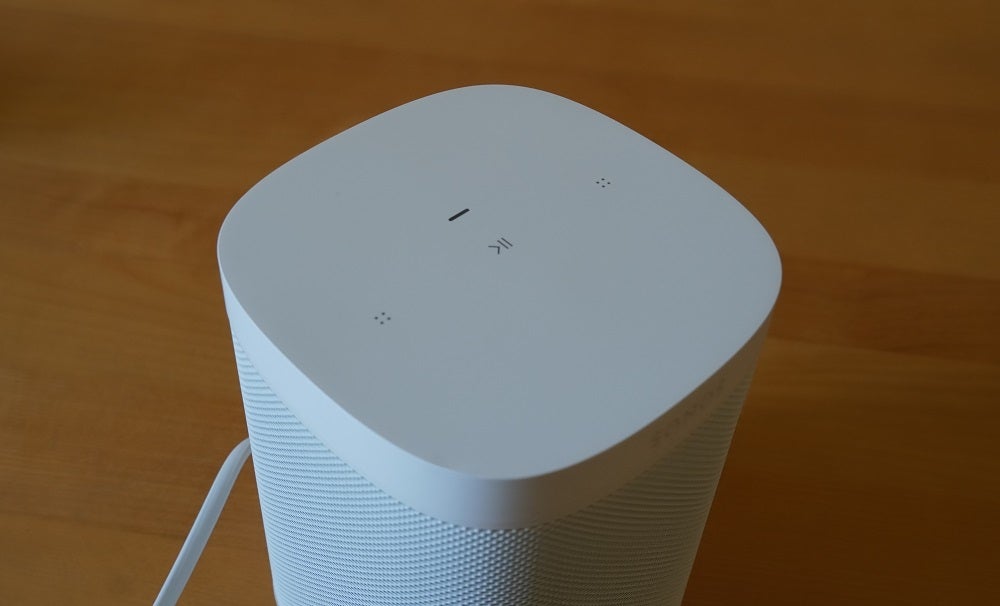
The speakers aren’t overwhelmed with features, otherwise.
Both speakers support streaming directly from a range of supported apps, including Spotify, Amazon Music, Tidal, Pandora and Audible.
There are EQ controls in the Sonos smartphone app, which allows you to adjust the bass, treble and loudness from your phone and, if you have an iOS device, you can use Trueplay to measure the acoustics of your living room or kitchen and fine-tune the speaker to fit its environment.
When it comes to connectivity, the two speakers support Wi-Fi, Ethernet and Apple AirPlay 2.
While the Sonos One (Gen 2) does support Bluetooth LE, that is only to simplify the first-time setup process, meaning there is no support for Bluetooth streaming on the speaker. This is the case for both models, with both prioritising Wi-Fi streaming for its higher fidelity over Bluetooth.
One interesting feature here is that you can pair the Sonos One and the Sonos One SL for stereo sound. Sonos actually recommends you do this over paying out for two Sonos One speakers as there is no additional benefit to having two voice-enabled speakers in one room.
Sonos also recommends you opt for the SL model if you plan on adding the speaker to your home cinema setup alongside the Sonos Arc or Beam, as both of these soundbars already offer voice support.
Performance
When it comes to audio performance, both speakers possess the same acoustic profile and both impressed our reviewers during testing.
In our review of the Sonos One (Gen 1), reviewer Ced Yuen praised the speaker’s great performance across the frequency range and class-leading audio for its size.
Rather than take a voice assistant and add audio streaming capabilities, the Sonos One is a Sonos speaker first with a smart assistant built-in, meaning you’ll get better sound quality than you might with a more traditional smart speaker.
The Sonos One offers a full-range sound despite its small size, with deep and controlled bass and the ability to push the volume to heights that will get your neighbours knocking on the door.
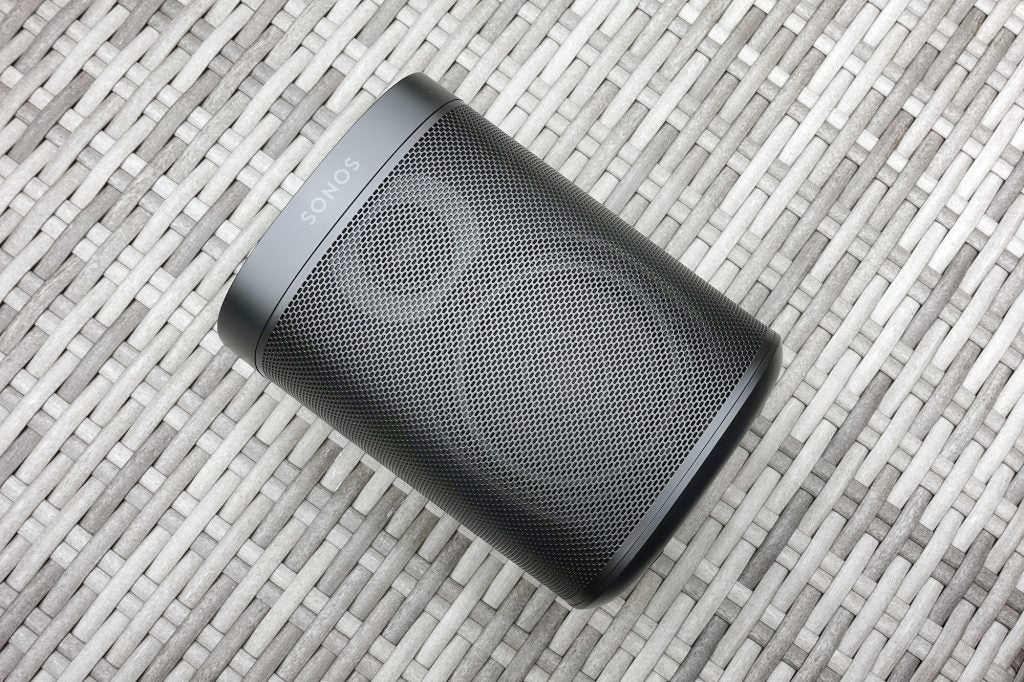
TV and audio editor Kob Monney echoed similar thoughts when it came to the Sonos One SL, which is powered by the same array of amplifiers, tweeter and mid-woofer.
The One SL is a formidable compact speaker with a spacious midrange, clear vocals and controlled bass. The only better-sounding smart speaker we’d encountered at the time of these reviews was the Apple HomePod.
Verdict
The choice between the Sonos One and the Sonos One SL might be one of the easiest decisions to make.
With only £20 and one mic array between the two, the question is: Do you want to pay a bit extra for Alexa and Google Assistant support? If you’re looking for a fantastic-sounding smart speaker, buy the Sonos One.
If you don’t care for voice assistants, already have access to Alexa/Google Assistant through another Sonos device or you don’t have any smart home products to command, you can save some cash by opting for the Sonos One SL.
Save money with Trusted Reviews vouchers
Fancy getting a major discount on some of the biggest Sonos products currently available? Then you’ll be pleased to know that our team has secured numerous vouchers and promo codes from Sonos, all in the name of saving you money.


